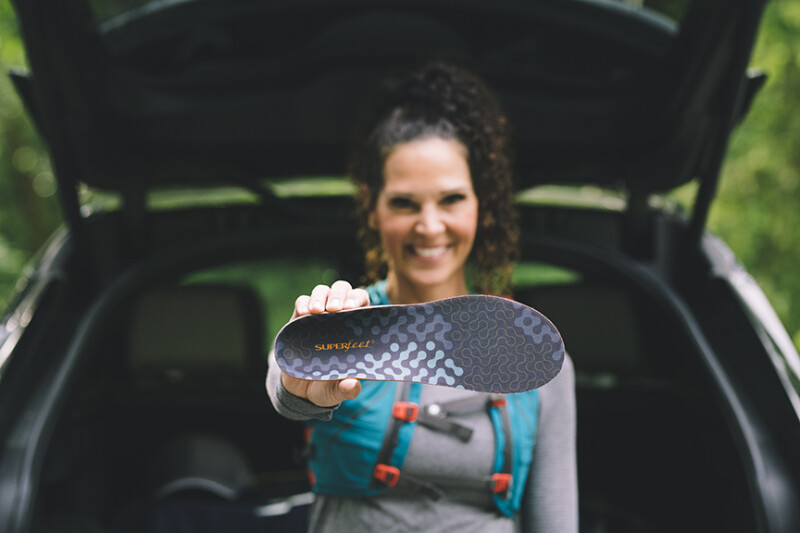COVID-19 Impact No. 1: One activity that’s been on the rise since the global shutdown and continues to spark interest in a (hopefully) post-pandemic world: running.
COVID-19 Impact No. 2: With all those new runners out there – along with existing runners logging more miles because there was nothing else to do – one hot item that most found they can’t run without turns out to be insoles.
“Since the pandemic, we’ve had an influx of new-to-running clientele and now with a healthy active lifestyle focus, the new runners are searching for ways to continue their lifestyle transition,” points out Stephanie Cornyn, GM of Big River Running Company. Among the big product winners at her three stores in Missouri: foam rollers, therapeutic massagers and, of course, insoles.
“A focus on staying injury-free and healthy is something this consumer is focused on and our staff is attuned to this specific concern,” she adds.
This focus on healthy running and injury prevention remains front of mind for run retailers, who are also benefitting from increased insole recommendations from physical therapists and podiatrists.
“Overall demand has increased since the pandemic,” says Josh Levinson, owner of Charm City Run, with six stores in Maryland. “We’re selling a lot more insoles in comparison to the number of shoes selling.”
Levinson says there has been a specific demand for insoles as more customers come into his stores with scripts from physical therapists and podiatrists for certain insole brands. With that in mind, Levinson says medical partners have greatly contributed to his insole business.
Cornyn agrees that medical recommendations have added to insole sales since the onset of the pandemic, changing the way Big River Running handles the fit process when runners shop for shoes and insoles.
“Big River Running’s fit process was initially designed to address items based on the customer’s needs and insoles have grown over the past few years, especially as neutral shoe offerings exploded,” she says. “Many customers shopping with Big River are referrals – medical and Big River customers – so we frequently have customers come in inquiring about further support.”
A New Approach to Selling
While not every retailer can rely on doctor and healthcare professional recommendations to get new feet in the door, there is a consensus there is enough awareness of the need for insole support – and more technical product to support that need – to make them a lucrative add-on sell.
“We carry niche brands, as we are still unable to get the larger shoe brands to allow us to sell their shoes, so for us, we are also converting customers to new brands,” says Catherine Hollister, owner of Blue Sky Endurance, Mount Pleasant, SC. “If we introduce an insert, which may also be new for them, it is typically only as an as-needed basis, such as if the customer is dealing with plantar fasciitis pain or shin splints.”
With a growing number of brands in the insole spotlight, each with their own strengths and sales pitch, it can be difficult for the consumer to decide which will be best-suited for their foot type. Run retailers are emphasizing education to deliver high-level customer satisfaction.
“We try to expose customers to everything in the store,” says Kyle Brady, manager of Naperville Running Company, with six stores in Illinois. Brady says customer education is the focus of Naperville’s sales model and he agrees that a decent percentage of customers looking to buy insoles have some sort of ailment.
With that in mind, he looks to expose them to the many options by educating them about the types of insoles Naperville sells and which ones will be compatible to their foot type.
“Our big thing is introducing things in the fit process early on,” says Brady, who feels this approach is the best way to engage the customer without threatening them with a pushy sales attitude.
And because a health-centered focus seems to be the trend in insole purchases, Brady feels it’s best not to treat insoles as an add-on sale and instead focus on understanding the customer’s need for them, while they simultaneously shop for the right shoe.
This is a must-have strategy also embraced by Cornyn at her stores.
“Big River Running’s strategy for insoles is using the insole as another layer to customizing a shoe to a customer’s foot and needs,” she says. “In our experience, shoes and insoles play tag-team and need to work together. If done correctly, it can improve the overall performance and enjoyment of the customer no matter the use — casual, performance, walking.”
Location, Location, Location
Education is certainly a part of Levinson’s sales model at Charm City as well; however, he feels that product placement is also a major contributing factor to insole sales, without making them feel like a forced add-on.
“If they have to walk too far or break up the dialogue with the customer it can be awkward,” he says. So instead of placing insoles in a separate display, Levinson makes sure each Charm City store conveniently places their insoles next to the running shoes, making them readily available to customers.
Hollister, too, focuses on product placement in her stores; however, she doesn’t worry much about bringing them out until customers have found the right shoe first.
“The insoles are next to the shoe wall and we usually introduce them after the customer has found their shoe of choice as an enhancement to the fit and support in the shoe,” she says.






